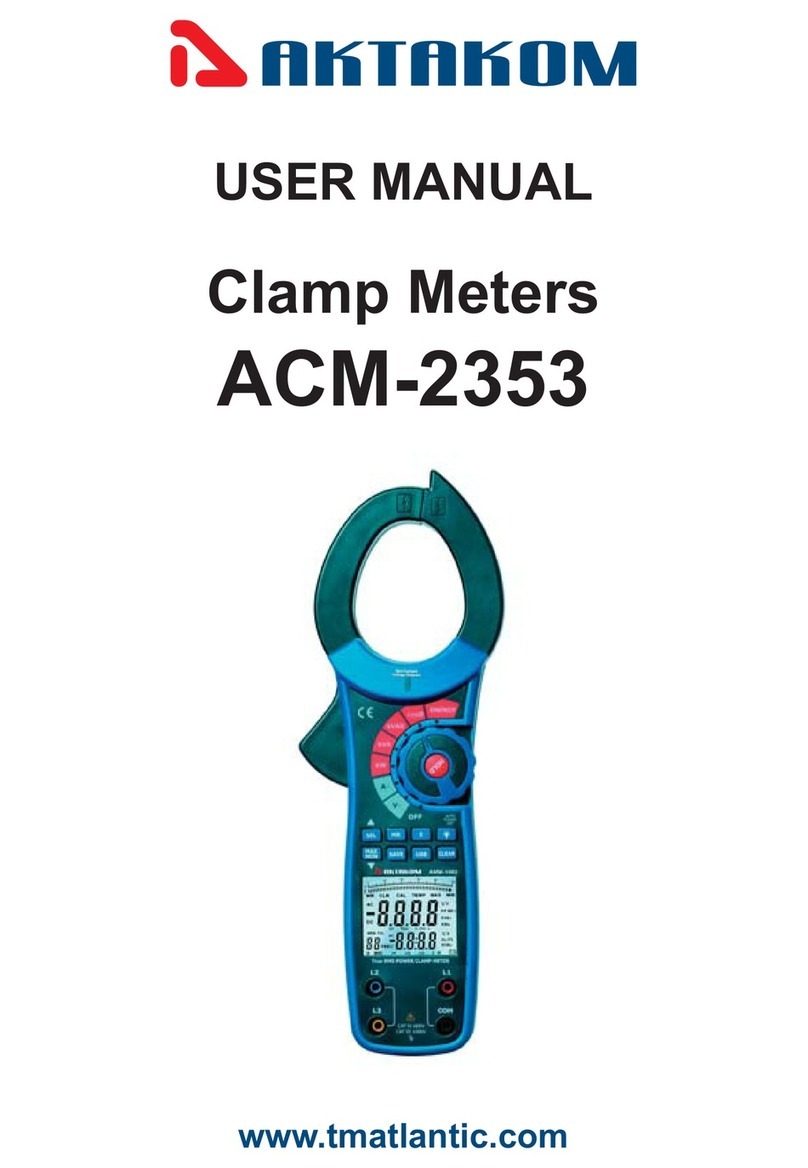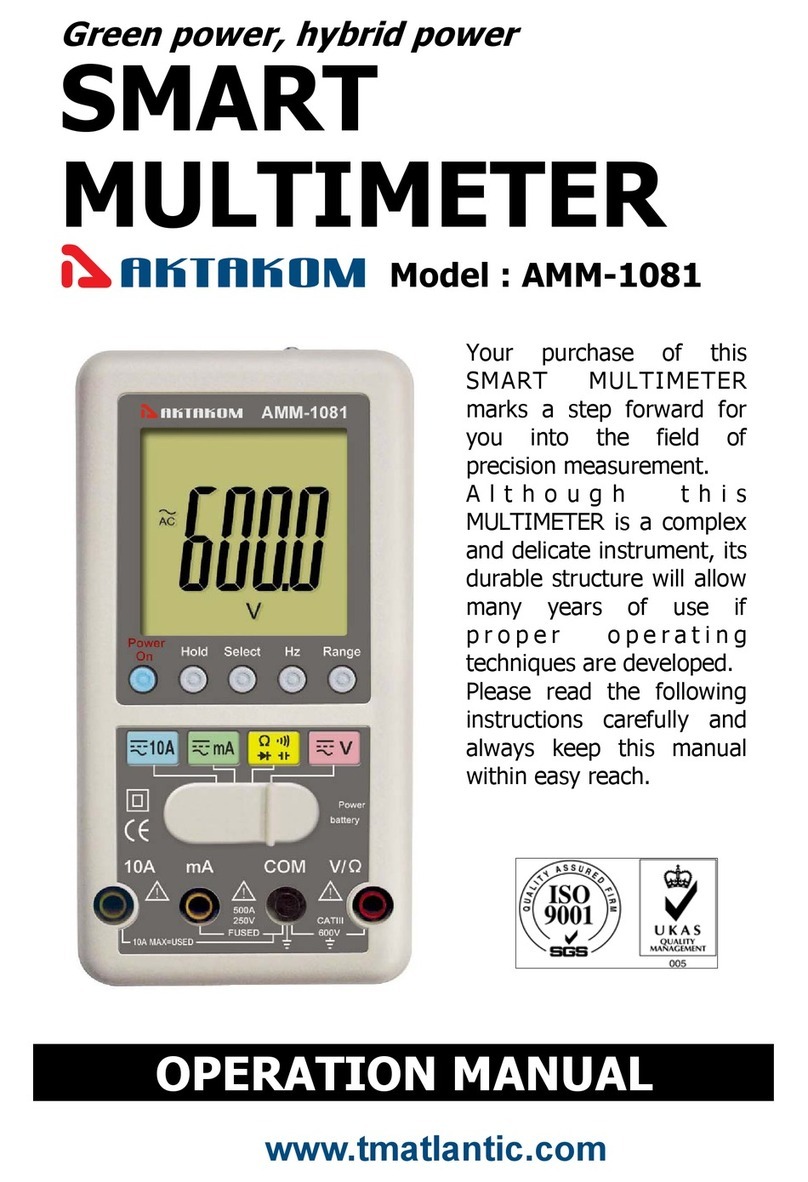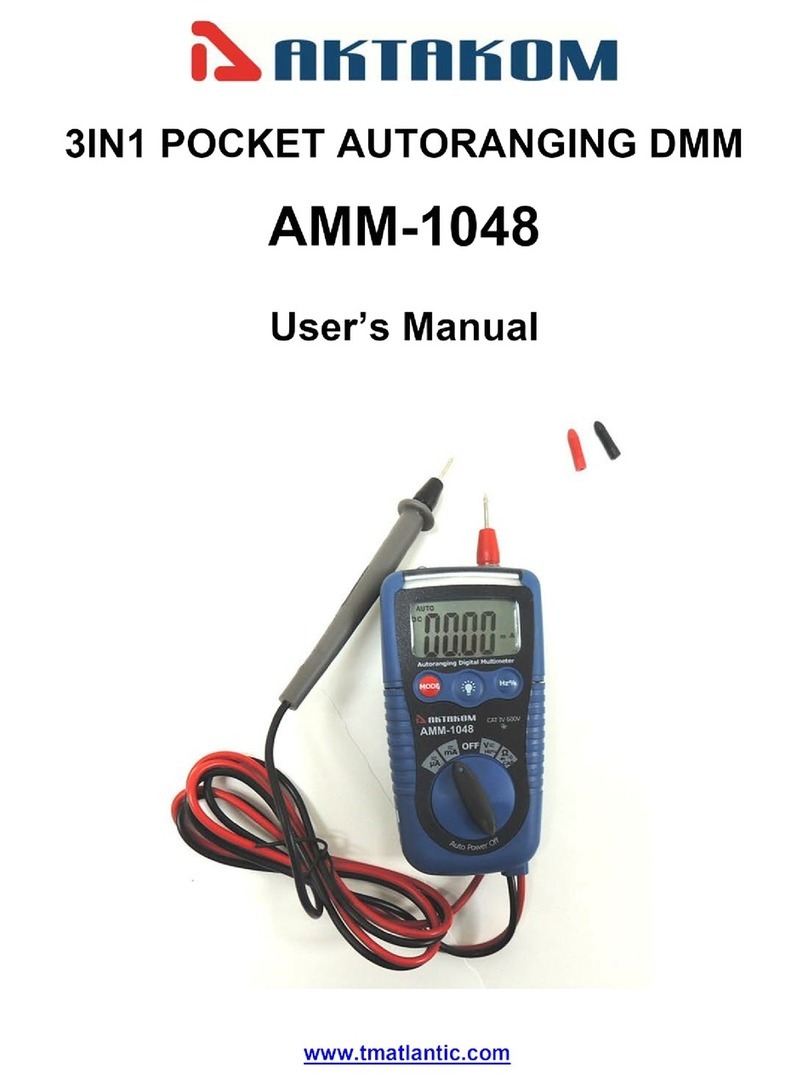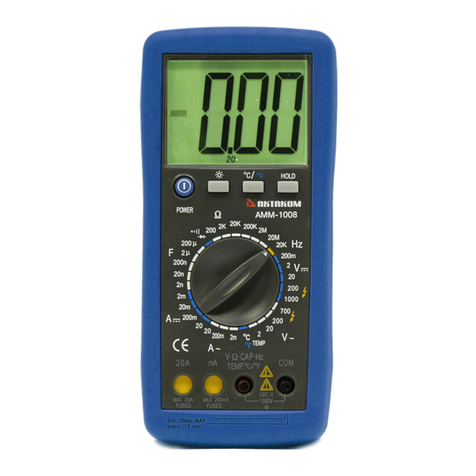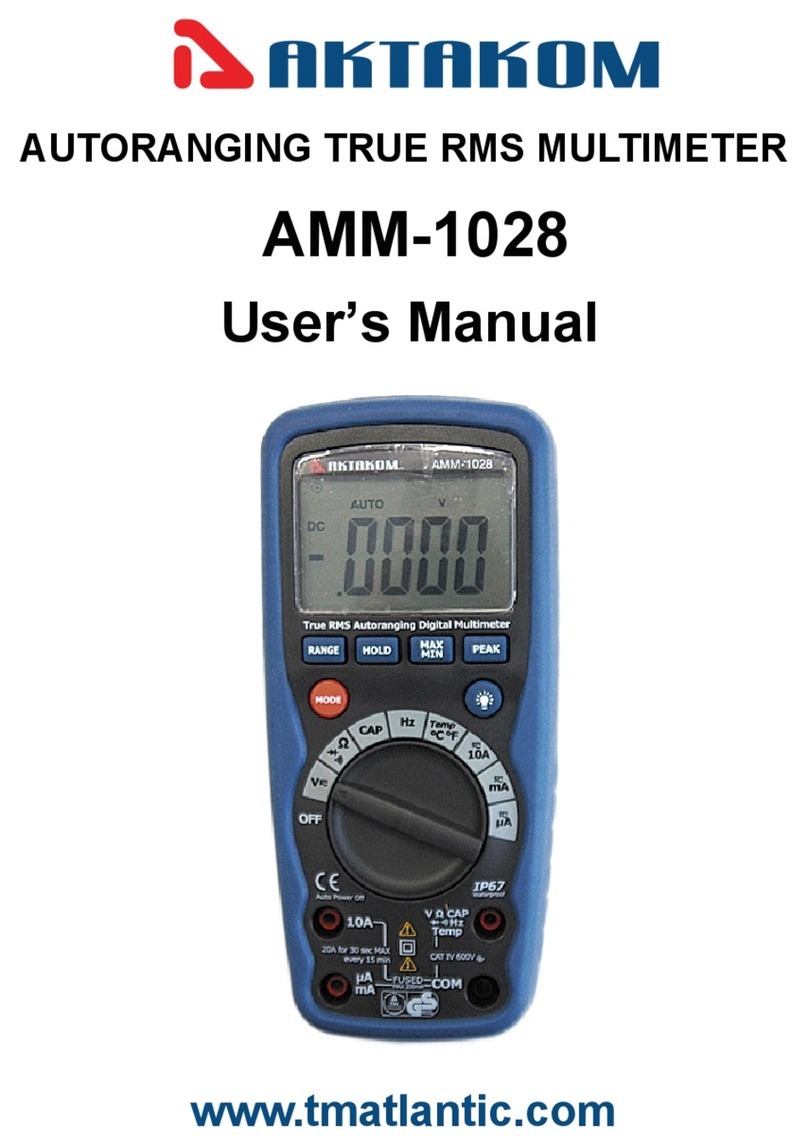OPERATION
Before taking any measurements, read the safety
information section. Always examine the instrument
for damage, contamination( excessive dirt, grease,
etc) and defects. Examine the test leads for cracked
or frayed insulation. If any abnormal conditions exist
do not attempt to make any measurement.
VOLTAGE MEASUREMENT
1.Connect the black test lead to COM jack and the
red test lead to V:jack.
2. Set the function/Range switch to the desired
voltage type (AC or DC) and range. If magnitude of
voltage is not known, set switch to the highest range
and reduce until a satisfactory reading is obtained.
3.Connect the test leads to the device or circuit
being measured.
4.For dc, a(-) sign is displayed for negative polarity;
positive polarity is implied.
CURRENT MEASUREMENT
1. Set the Function/Range switch to the desired
current type (AC or DC) and range.
10






